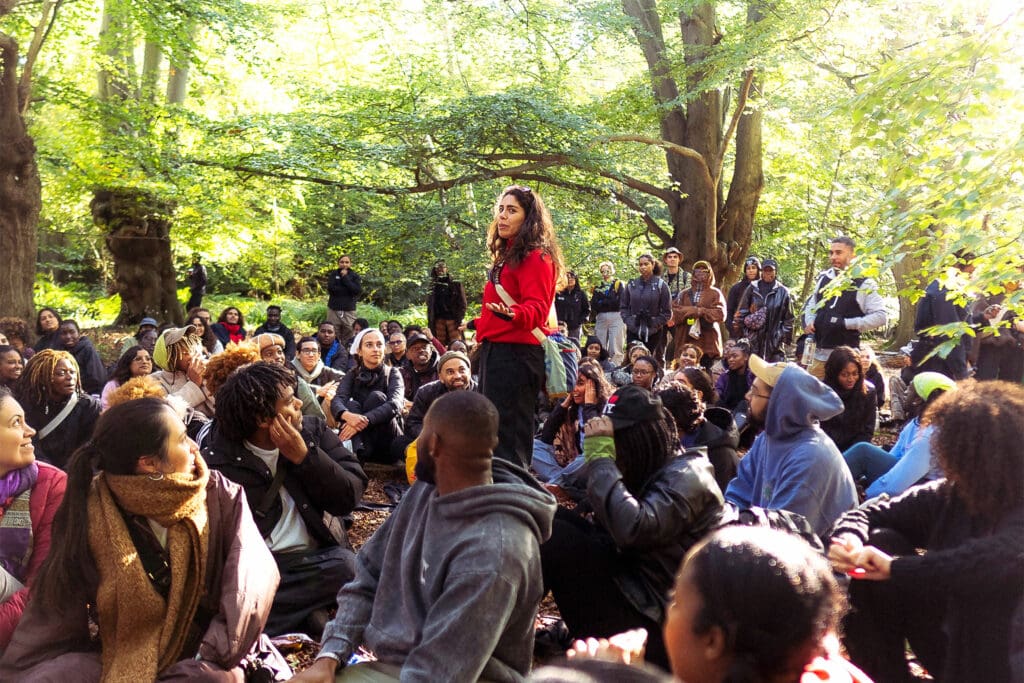At the RSPB, we often see first-hand how nature conservation and art, when brought together, hold great influence – and how art can amplify the often-hidden treasures of nature.
I spoke to a selection of nature artists about their own journeys, their inspiration and their views on nature and art. But let’s begin with a classic piece of art that we see every day on our magazines, signs, websites and social media: the RSPB’s Avocet logo.
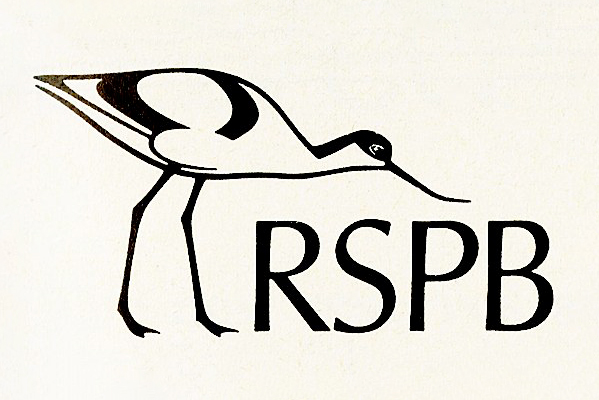
The original Avocet logo designed by Robert Gillmor. Photo: The RSPB
Robert Gillmor
The Avocet first appeared as an RSPB emblem on the Society’s new tie in 1955. Then, in 1966, it began to feature in the Society’s publications as a logo. This image is a redesigned version of this, created in 1974 by the wildlife artist Robert Gillmor (it has been adapted a few times since). Robert also illustrated many covers of The RSPB Magazine when it was called Birds, as well as numerous books and postage stamps. He served on the RSPB Council and was a co-founder of the Society of Wildlife Artists (SWLA). In 2001, Robert was awarded the RSPB medal (which he himself had designed) in recognition of his significant achievements in wildlife art and conservation. Robert passed away in 2022 but is fondly remembered at the RSPB and across the nature conservation sector to which he contributed so much.
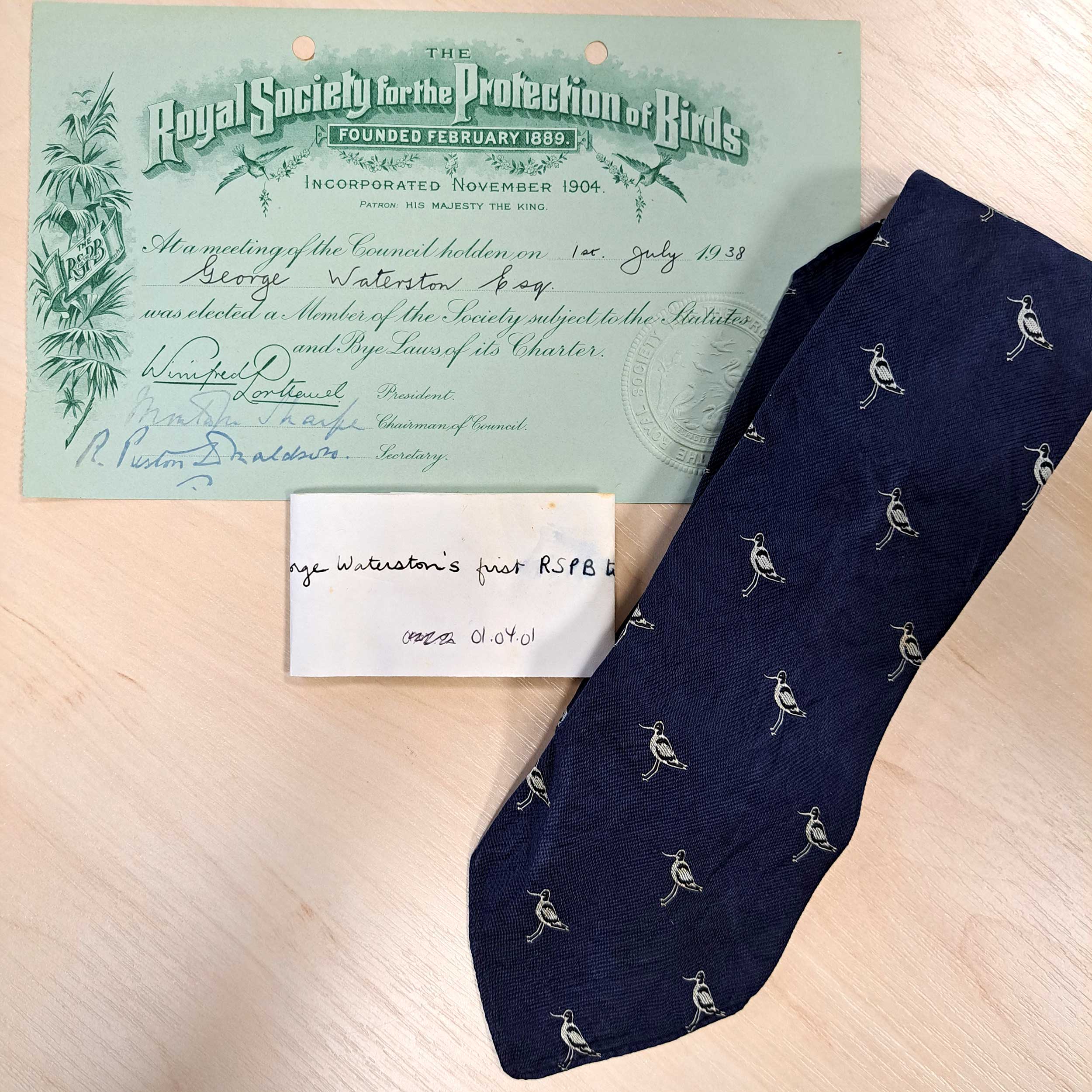
An original RSPB tie featuring the Avocet logo and a membership card belonging to RSPB member George Waterson. Photo: The RSPB.
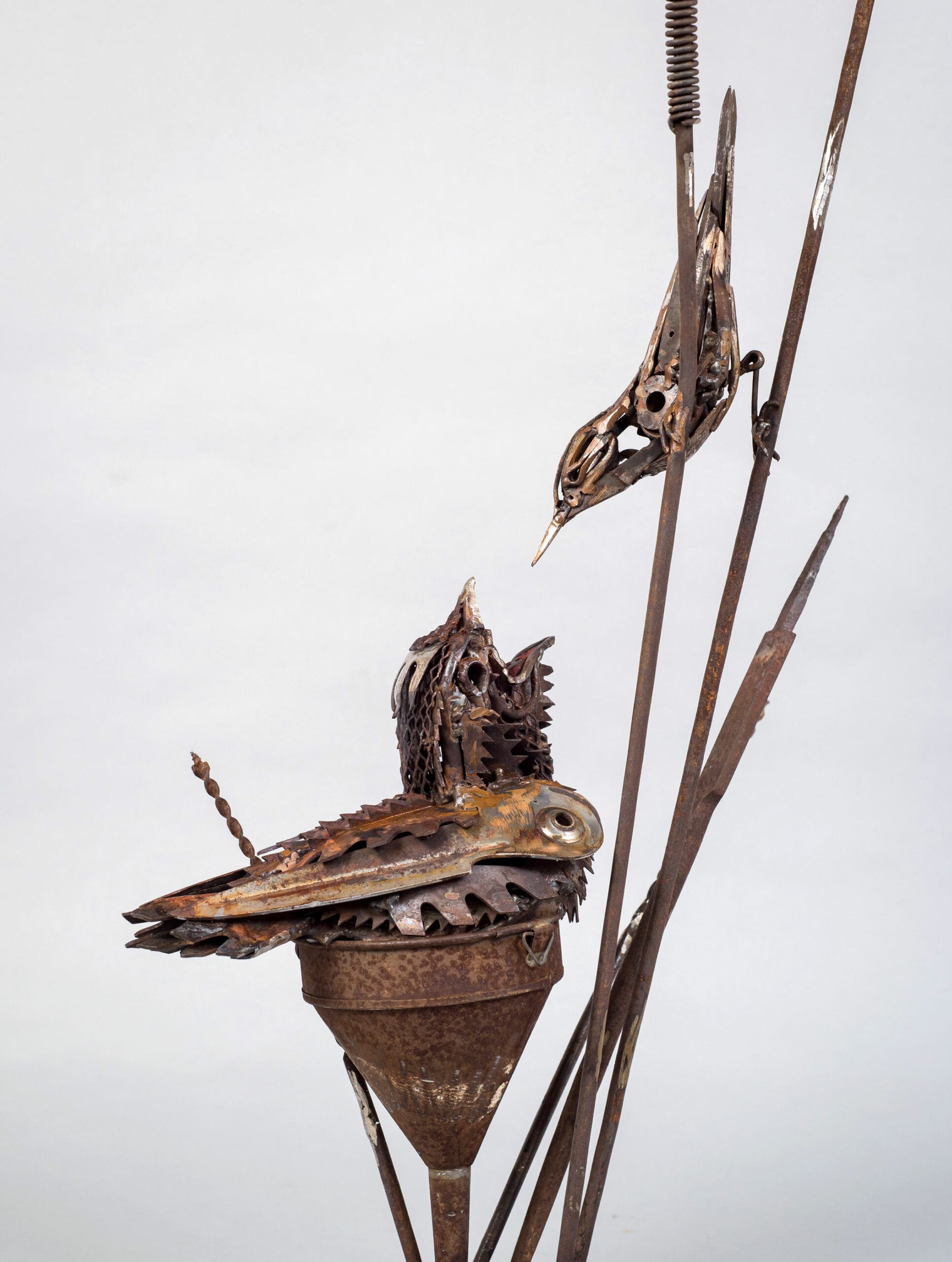
Funnel by Harriet Mead. Image: Harriet Mead
Harriet Mead
Sculptor Harriet attributes her passion for creativity to being around art and nature from a young age. Her father, author Chris Mead, was an ornithologist and her mother was a keen naturalist. Harriet says her “childhood was filled with pets and wildlife,” and she’d use animals as her subject matter when drawing. When asked about nature artists and their ability to influence society in conservation matters, Harriet says: “Using art and the skills of artists can be a brilliant way to voice a conservation message to a wider audience.” Harriet explains that the SWLA (Society of Wildlife Artists) has member artists who are themselves very knowledgeable naturalists. The SWLA has partnered with various charities on art projects including the British Trust for Ornithology (BTO)’s Flight Lines, Dorset Wildlife Trust’s Kingcombe and RSPB Wallasea Island, as well as international projects in Turkey and Denmark. “On the Danish Wadden Sea project, we designed a comprehensive programme of drawing workshops with schools from all over the region,” she says. “These events highlighted the importance of their local area and nurtured the children’s observational and artistic skills. “These experiences often have huge benefits long term. By engaging young people, the importance of the area is understood, and a sense of community is strengthened.” We asked Harriet if she could provide a piece of her artwork to include here. She chose the above sculpture, Funnel, “because it is a great example of the strength of welded metal and was made for one of our most ambitious collaborative projects – SWLA/BTO Flight Lines Project.” The project paired selected artists with researchers and field biologists to create art that tells the story of our summer migrants.
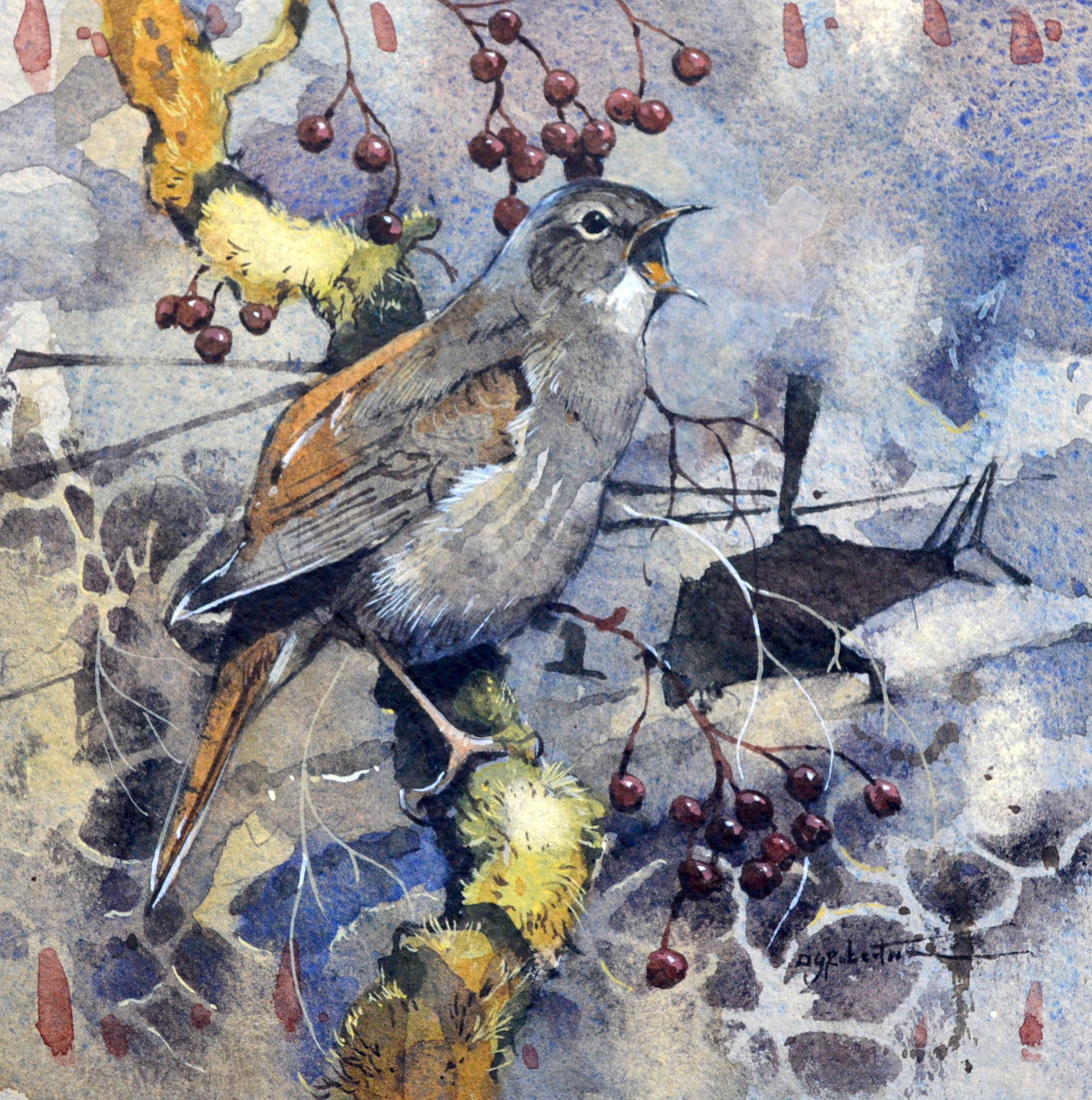
Derek Robertson’s RSPB Award-winning painting, In the Darkest Place the Nightingale Sings. Image: Derek Robertson
Derek Robertson
Derek Robertson won the RSPB Award at the annual SWLA Natural Eye exhibition in 2023 with In the Darkest Place the Nightingale Sings. Derek was always fascinated by wildlife and had a compulsion to draw and paint. His earliest memories are of searching for centipedes and woodlice under rocks or catching minnows and tadpoles in ponds and rivers. Likewise, from as early as he can remember, he was always drawing on everything – scraps of paper, the backs of cereal packets and, once, to his mother’s horror, the new wallpaper in her dining room. He says that he’s been lucky that these two passions have always intertwined and complemented each other. The winning painting is part of a large series of work for Derek’s project Migrations, which links climate change and the refugee crises using birds as a metaphor for people. It also highlights birds’ role as environmental indicators. “The project led to me visiting refugee camps and transit points across Europe and as far as the Middle East, staying with refugee families and travelling with ecologists in these regions,” Derek explains. “These recent paintings of Nightingales in Guelder Rose bushes are about the recent experiences of Ukrainian refugees.” His advice to early-career artists is to be inspired by the work of others, but then work through that and find a voice that is more uniquely yours. “There is no point in fixating on being the best artist ever or comparing yourself to the careers of other artists,” says Derek. “Your job is to find your own, authentic way of expressing yourself and doing that in as a creative a way as possible – and enjoying that process of learning and creating while doing it.”
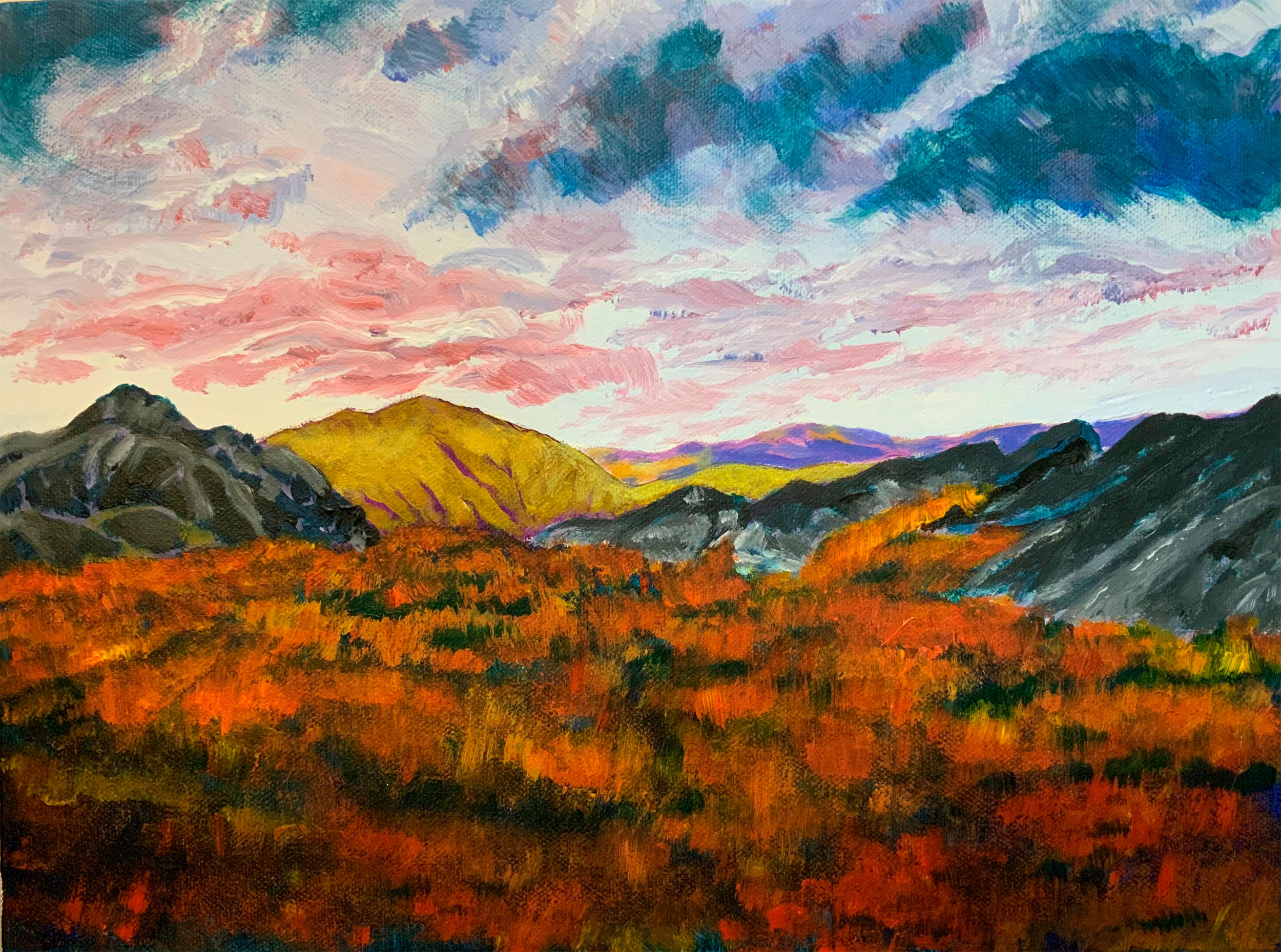
Beara by Peter Bradley. Image: Peter Bradley
Peter Bradley
Peter is Senior Site Manager at RSPB nature reserves The Lodge and Fowlmere. He’s worked with the RSPB since 1990 across several reserves including Nagshead, Fore Wood, Rye Meads, Mid Yare and Titchwell. Now, he’s preparing for his own art exhibition. “I’ve always loved the countryside and wildlife, and improving it for nature and people. I’ve managed reedbeds and fen meadows, restored heathlands and developed a natural play area for families to enjoy,” he says. “I’ve been privileged to experience nature close to, and witnessed the hard work and dedication of, RSPB staff and volunteers.” With his art exhibition, which will take place at The Lodge in 2025, Peter hopes to show what the RSPB does on the ground to look after nature, as he feels it can be overlooked. “It would be wrong to think that nature just looks after itself on our nature reserves,” he explains. “I hope the exhibition will show some of what we do for our wildlife, and why RSPB needs support to do it.”
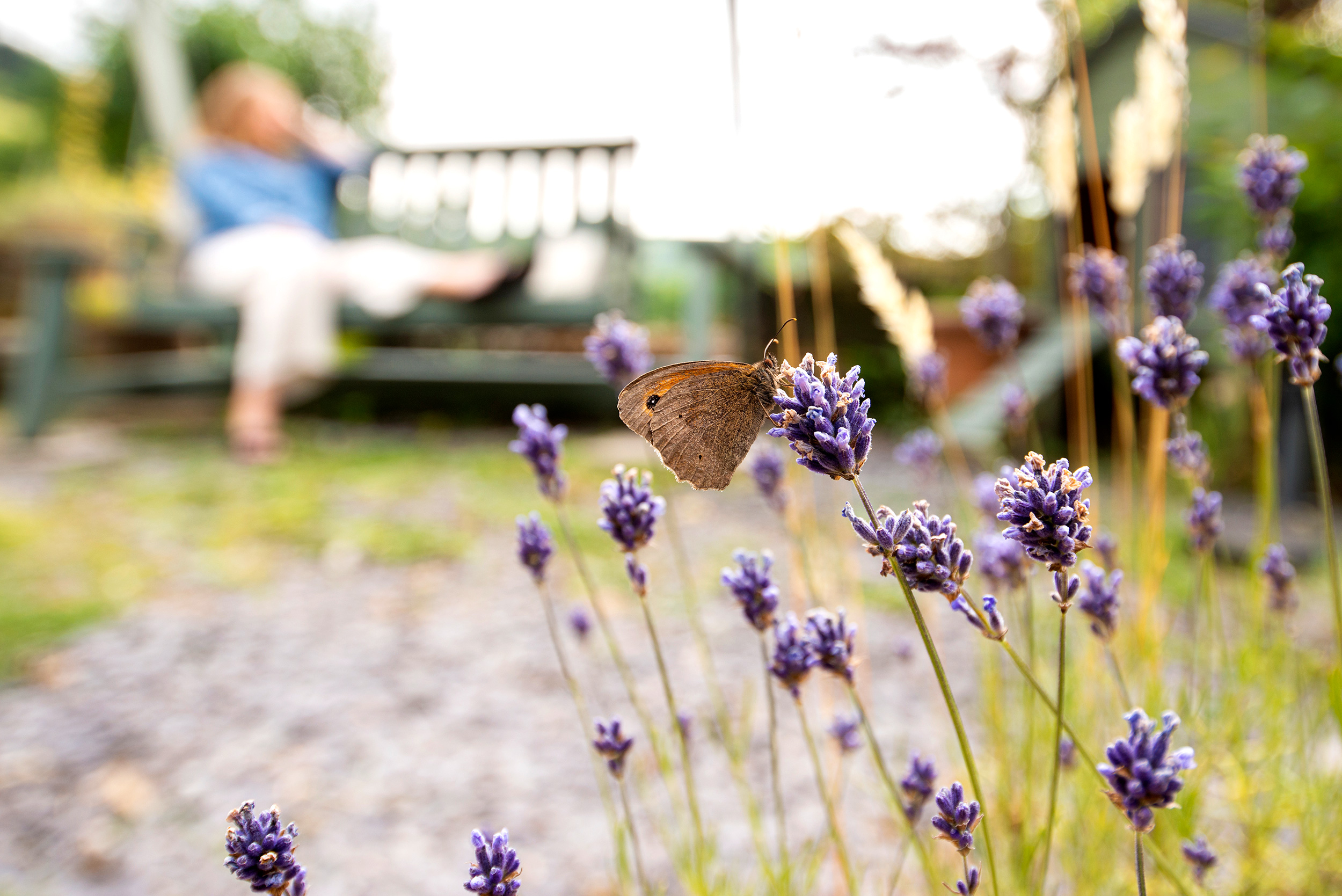
Alison is inspired by nature helping our wellbeing. Photo: Richard Bowler (rspb-images.com)
Alison Blagdon
Alison Blagdon, RSPB Volunteering Development Manager, was inspired to embark on a creative project that brings together poetry and nature in support of mental wellbeing. “In 2021, while trying to process – as we all were – the global pandemic and how it had changed our world, I suffered a series of sudden and catastrophic health and personal disasters that changed my life,” she says. As her world was thrust into turmoil, she leaned into nature, falling in love with the natural world. Alison is currently taking a sabbatical from her RSPB role. She explains, “I’ve chosen to combine my love of nature with my passion for writing poetry and publishing, using my sabbatical to examine the connection between nature and mental health more closely – but from a creative perspective rather than a scientific one.” With her sabbatical, Alison is reflecting the RSPB’s ambition to inspire more, and more diverse, people to take action for nature. And one way of doing this to raise the profile of the mental health and wellbeing-boosting benefits of connecting with nature. Alison will be producing a poetry book called Grounded by Nature. “Through this book, I aim to tell a powerful story of how connection to nature can improve our mental health and give us hope during our most difficult times,” Alison says. “I want the book to inspire more people to connect with and protect our natural world. That is its main mission and one that I believe holds a great deal of power.”
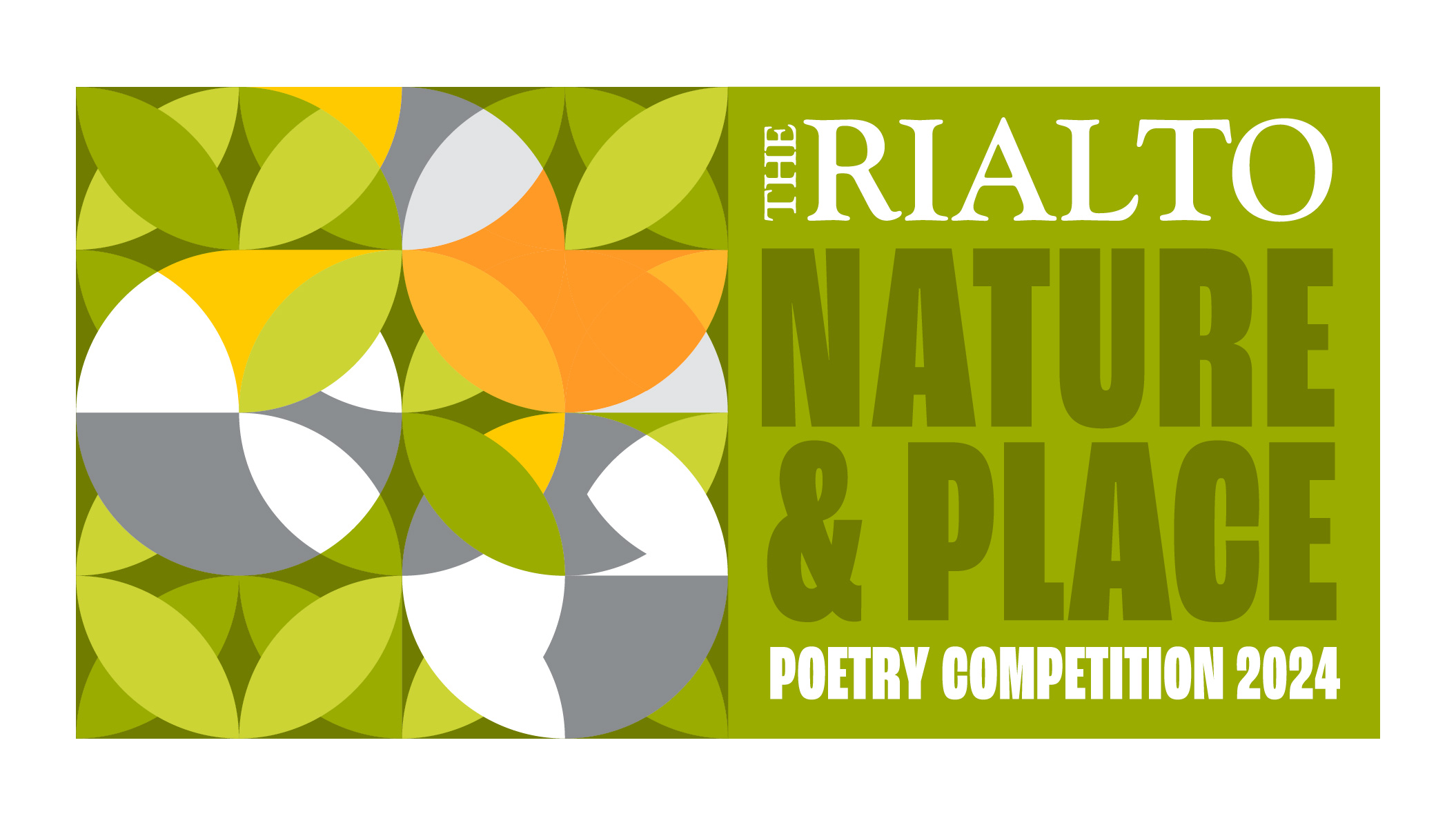
The Rialto Nature & Place Poetry Competition 2024
Matt Howard
RSPB Volunteer, and award-winning poet, Matt was inspired to set up the Nature and Place competition and collaborated with lifelong RSPB member Michael Mackmin, editor of Rialto poetry magazine. “From the start our ambition was that it would offer something new to existing RSPB audiences and indeed be something that would appeal to the poetry audience,” says Matt.
Now a leading poetry competition, collaborating with other conservation societies and universities, it has received over 32,000 poems from around 14,000 entrants spanning over 20 countries since its launch in 2011. Supporting nature, poets and poetry, it’s open annually and receives submissions for a small fee from over 18s and offers free entry for low-income entrants.
You might also like
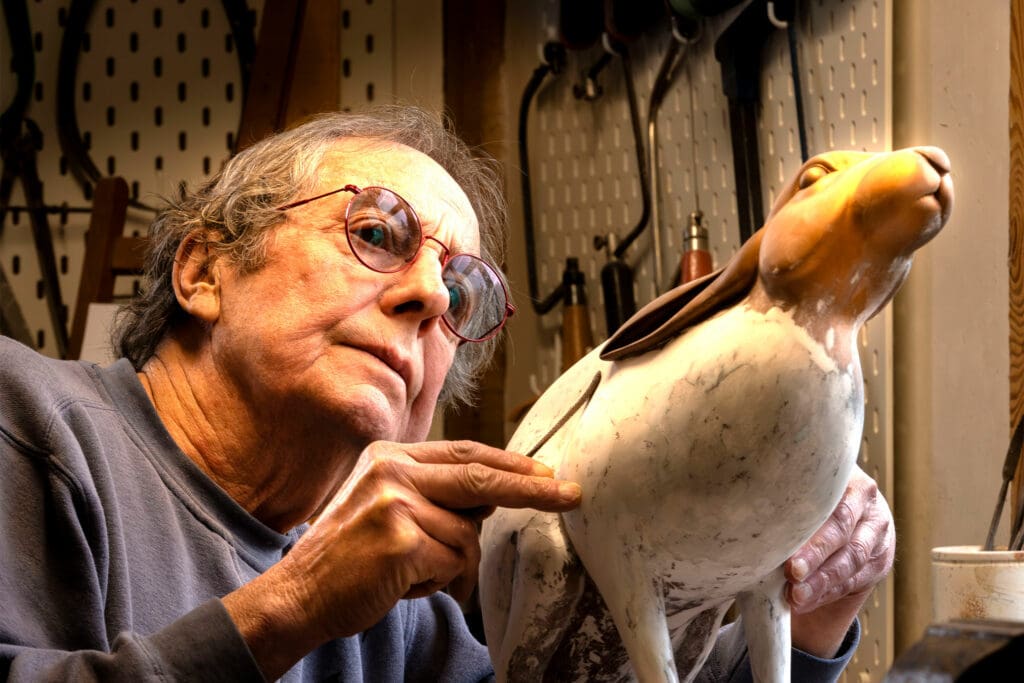
Natural treasures

Summer/autumn 2024 book releases
